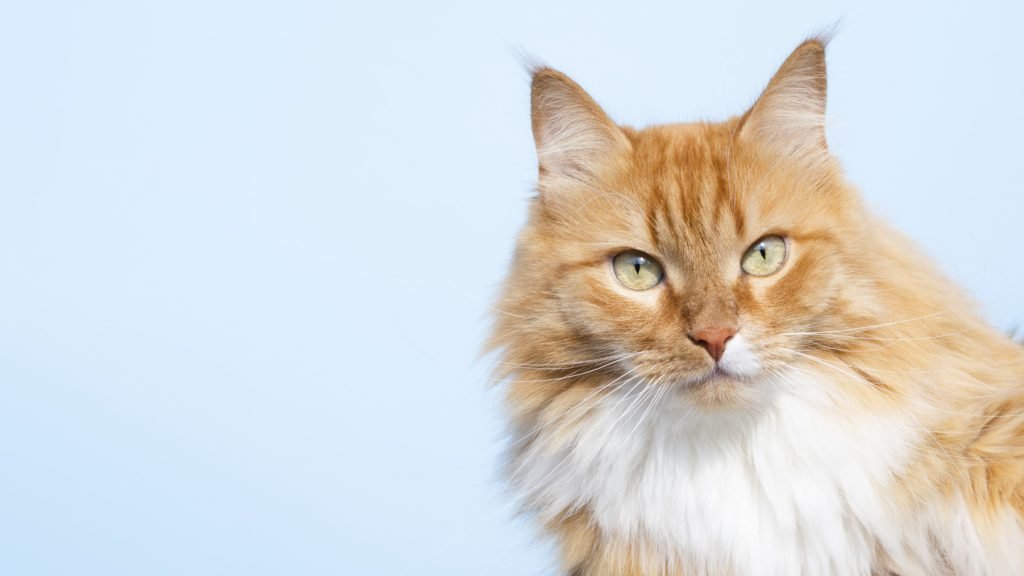Cat Sizing Chart
With the proven connection between weight and health, it’s no wonder that keeping your cat fit is important to keep them healthy. When cats are overweight, they are at a higher risk for different diseases, such as diabetes mellitus and joint disease.
Simply knowing your cat’s weight isn’t enough to determine if they are overweight or not. Instead, evaluating your cat’s body condition score is a great way to determine if they are a healthy weight.
Measuring Your Cat
One way to determine how big your cat happens to be is by measuring them. Cats can be difficult to measure, as they often won’t hold still for long, so be ready with your measuring tape. When you take your cat’s measurements, you can convert those numbers into your cat’s body mass index.
For reference, cats with a body mass index, or BMI, higher than 42 are considered overweight and need to lose weight. The way to calculate your cat’s BMI is to:
- Measure your cat’s rib cage all the way around (first number).
- Measure the length of your cat’s leg from their knee to their ankle (second number).
- Divide the first number you got by 0.7062 then subtract your second number (third number).
- Divide the third number by 0.9156 (fourth number).
- Take the fourth number and subtract the second number. Now you have your cat’s BMI.
The Cat Sizing Chart
A much simpler method to determining if your cat is overweight, although it’s a little less scientific, is to use a feline body condition score. You can compare your cat’s body shape to a cat sizing chart put out by one of a few organizations or companies, which usually gives your cat’s body condition score, or BCS, on a scale of 1 to 5 or 1 to 9. An example from the WSAVA uses the 1 to 5 scale.

On a BCS of 1 to 5, a cat that is a 1 is emaciated, 3 is ideal weight, and 5 is obese. On a scale of 1 to 9, a BCS of 1 is emaciated, 2 to 3 is underweight, 4 to 5 is ideal, 6 to 7 is overweight, and 8 to 9 is obese. When evaluating your cat’s BCS, you need to look at their body silhouette from above and also look at their shape from the side.
A cat at an ideal weight has an absent fat pad with a trim waist. The ribs are palpable, with only a slight fat covering over them.
Breeds of Cats
There are many breeds of cats, and they all come in different shapes and sizes. Some are rather petite critters, such as the Munchkin cat, while others are quite large, such as the British Shorthair and Maine Coon. Using a system such as the body condition scoring system allows cats of any size to be evaluated on their weight, without having to use a number.
Of the different cat breeds, numbers vary depending on the overarching cat organization, so you’ll find a lot of variety. The largest organization, The International Cat Association recognizes over 70 different cat breeds, from Bengal cats to Sphinx cats, while the Cat Fancier’s Association in America only recognized 44 cat breeds as of 2018. Some breeds are relatively new to the mix, such as the Lykoi.
The average size of a cat, without considering the breed or breeds that make them up is 7.9 to 9.9 pounds, although many cats are unfortunately starting to trend upwards. Many cats are described by their coat length, such as being a domestic shorthair, medium-hair, or long-hair, which is not a breed designation in most cases. One reason for this is that cats have had little genetic variation over the centuries of human domestication, with most not being bred for specific purposes.

In Summary
Using a body condition scoring system to size your cat or even a body mass index are concrete ways to help determine if your pet is over or under their ideal weight. The convenient thing about the BCS method is that it can be done anywhere, at anytime. Just ask your veterinarian to show you how to determine your cat’s BCS.
The important thing to keep in mind are the trends in your cat’s BCS. If they are starting to move upwards, such as from a 5 to a 6, you know they are gaining weight and likely need to shed some pounds. Moving downwards in trend, such as from a 4 to a 3 without being dieted, can suggest that something might be wrong with your cat, such as hyperthyroidism. If you’re noticing a trend like that, contact your veterinarian for an exam.
Resources
http://calorielab.com/news/2010/08/16/the-f-bmi-no-it-means-f-eline/
https://en.wikipedia.org/wiki/Cat
https://vet.osu.edu/vmc/sites/default/files/images/Body%20condition%20score%20chart%20cats_0.pdf
https://www.hillspet.com/cat-care/new-pet-parent/how-many-cat-breeds-are-there
https://www.hillspet.com/pet-care/resources/body-condition-score
Brief
A cat sizing chart is a helpful way to determine if your cat is overweight or too thin. Evaluating their body condition score is the most commonly used method.
Read More Articles
Subscribe
Subscribe to receive latest news and articles from us.



